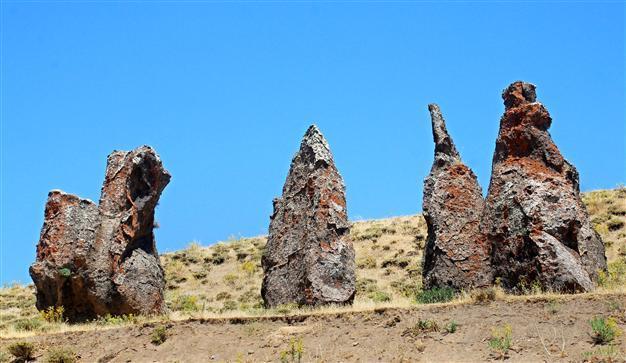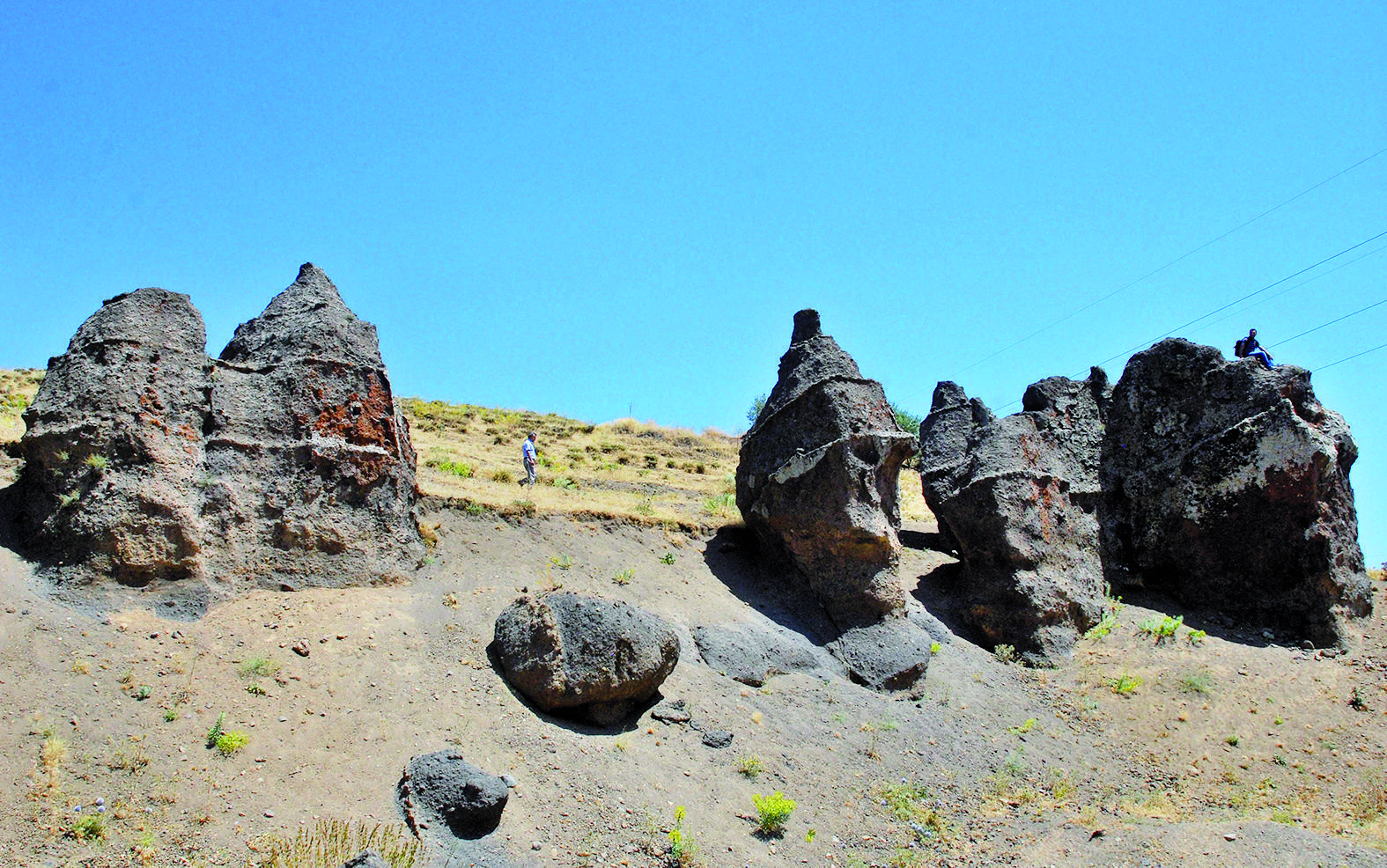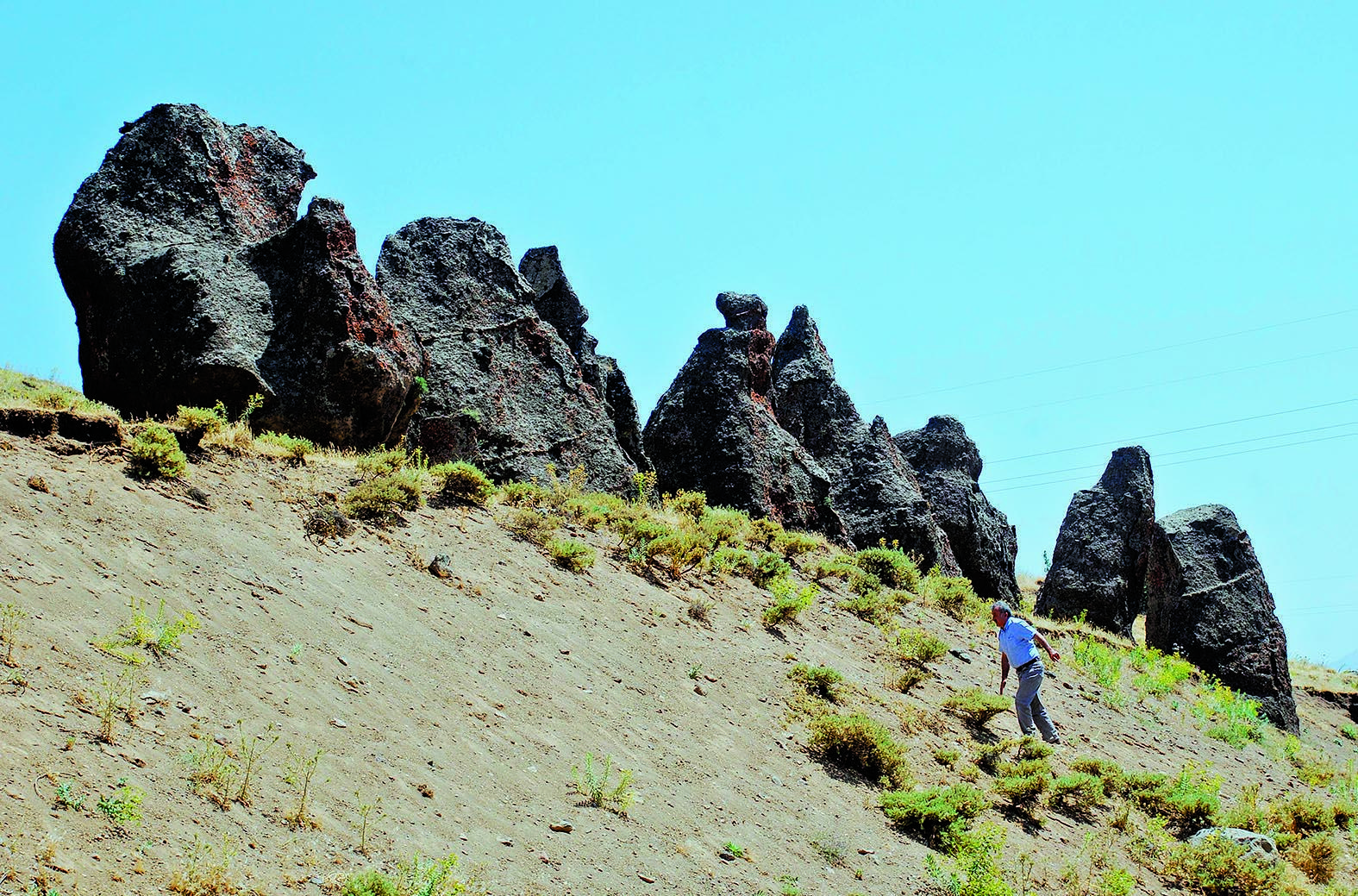Nemrut’s camels resisting time
BİTLİS - Anadolu Agency

The rocks, called the ‘Camels of Nemrut’ as they resemble camels, are being worn down by time and damaged by people. AA photo
Rock formations created by an eruption of the volcanic Mount Nemrut in the eastern province of Bitlis’ Tatvan district are in danger of being destroyed. Located in Tatvan’s Karşıyaka neighborhood, the rocks, which are called the “Camels of Nemrut” as they resemble camels, are being worn down by time and damaged by people because they are not protected effectively.
Bitlis Eren University history department member Associated Prof. Mehmet Demirtaş said no preventive measures have been taken in the region, which is a protected area, and the rocks were being damaged every other day.
Demirtaş said most of the rocks had been damaged by time and very urgent measures should be taken to arrest this damage.
“Those rocks were called the Camels of Nemrut,” said Demirtaş, adding that the stones had become strangely shaped after exposure to external factors such as rain for thousands of years.
He said the rocks looked similar to the formations in the Cappadocia region, and continued:
“Their shapes are similar to camels. They have been broken and eroded over time. The Camels of Nemrut were declared a first-degree protected area in 2010. Unfortunately, declaring a place a protected site is not enough for the protection of that place. There is not even a signboard to warn people in this area, which was called the ‘Water of Camels’ in the past. Some stones were broken even after it was declared a protected site. Excavation soil is discharged here. This is why the number of rocks decreases. Houses have also been built in this area. There are some 30 stones now in this protected area but 20 years ago [their number] was 50.”
Ancient city is not protected
Speaking on the value of historical artifacts, Demirtaş said, “The efforts of volunteers like us continue against all preventions. The state and relevant units should provide support.”
He also noted the ancient city of Tatvan in the district was not protected, despite being categorized as a first-degree archaeological site.
“There is a problem of protection when it comes to ancient sites. The ancient city of Tatvan is one of the obvious examples. This ancient city was registered in 1986. Although it is a first-degree archaeological site, it is not even surrounded [by a barrier]. The ancient city has been left to its fate,” said Demirtaş.
He said people had a mission to preserve historical artifacts for future generations, and called for officials to do their work for the protection of the site.
Demirtaş also said they would begin working to promote historical and natural places in the region.
“The Camels of Nemrut are very important for the future of our district. We do our best for this area,” he added.
Van Yüzüncü Yıl University academic and Lake Van activist Erdoğan Özel said they would carry out works to promote the area.
“We have formed a group named the Lake Van Activists. One of our goals is to protect the historical heritage in the region. From now on we will take care of the Camels of Nemrut and promote them,” he said.


